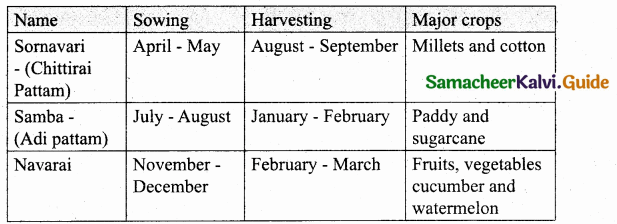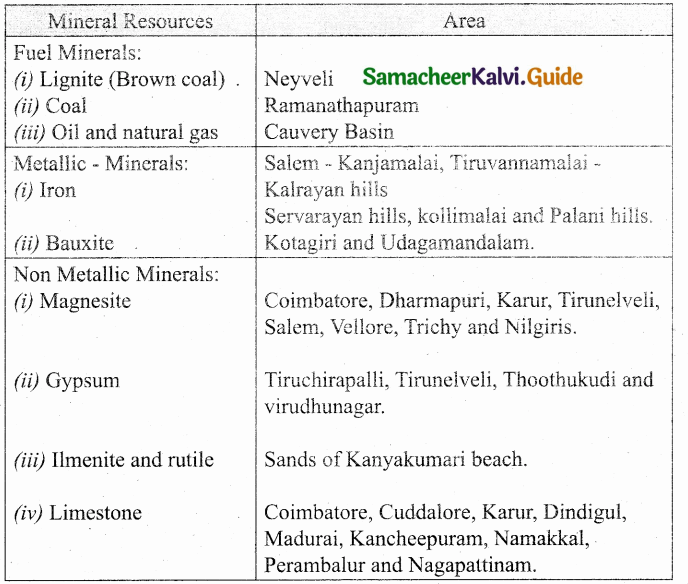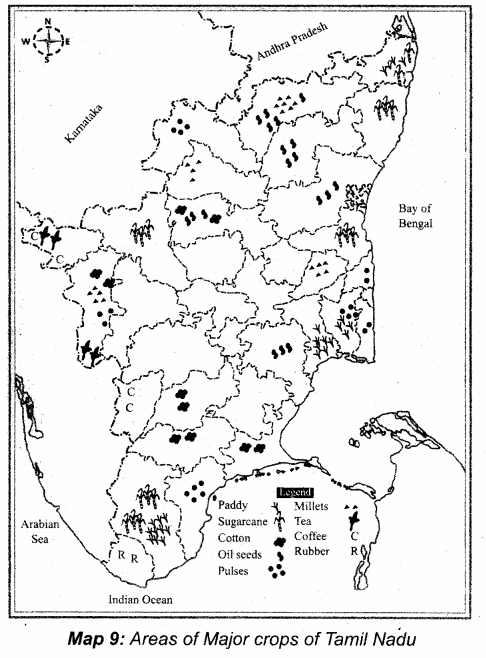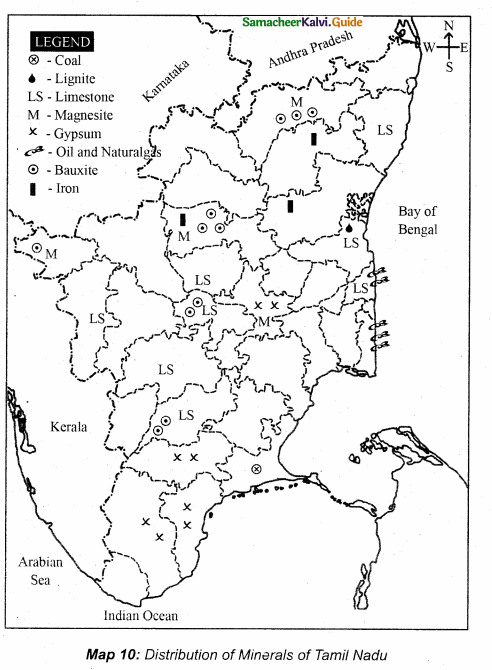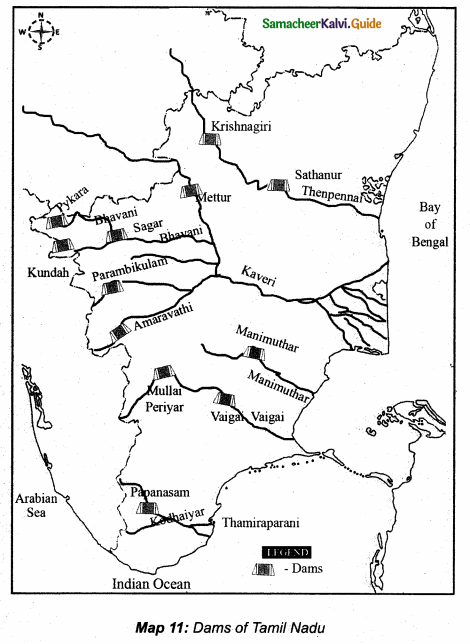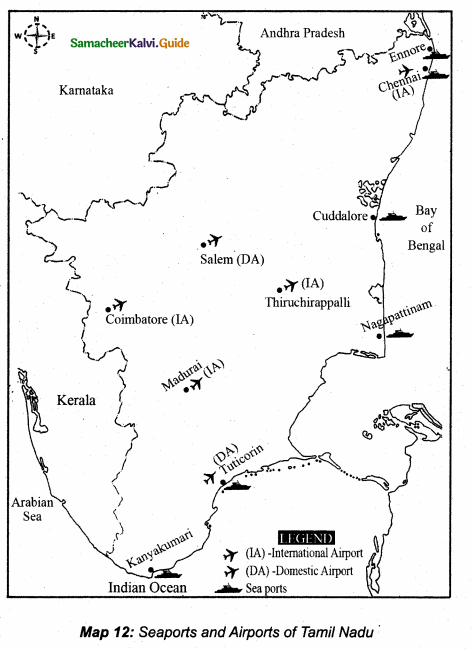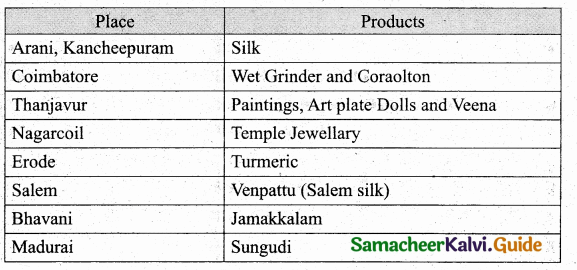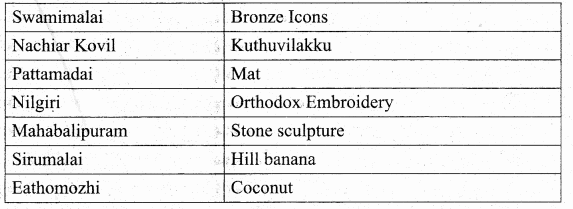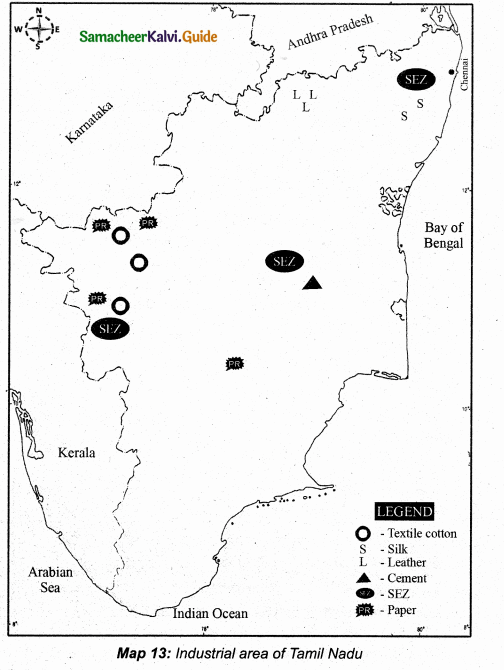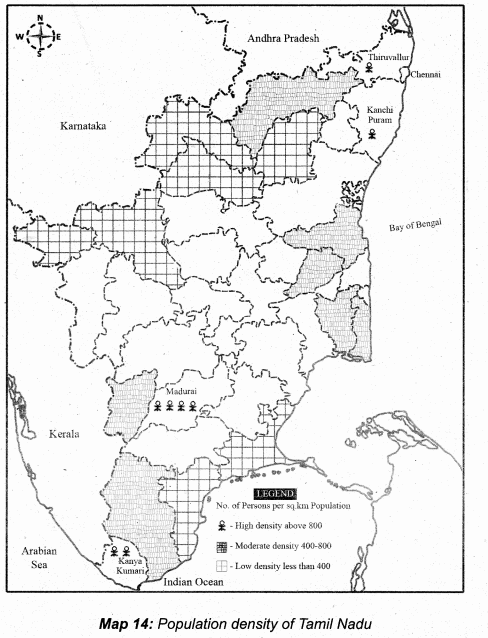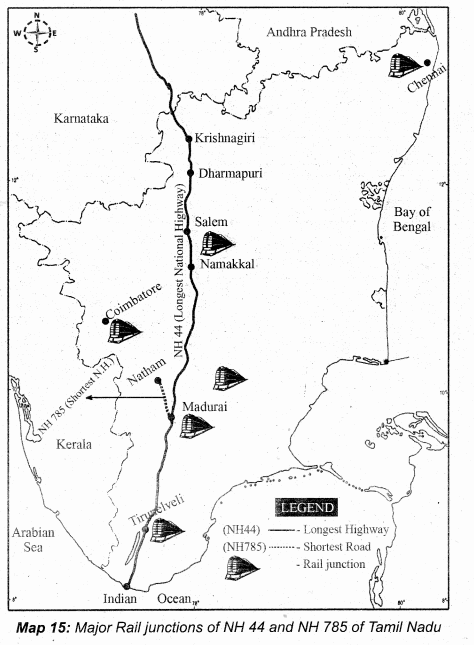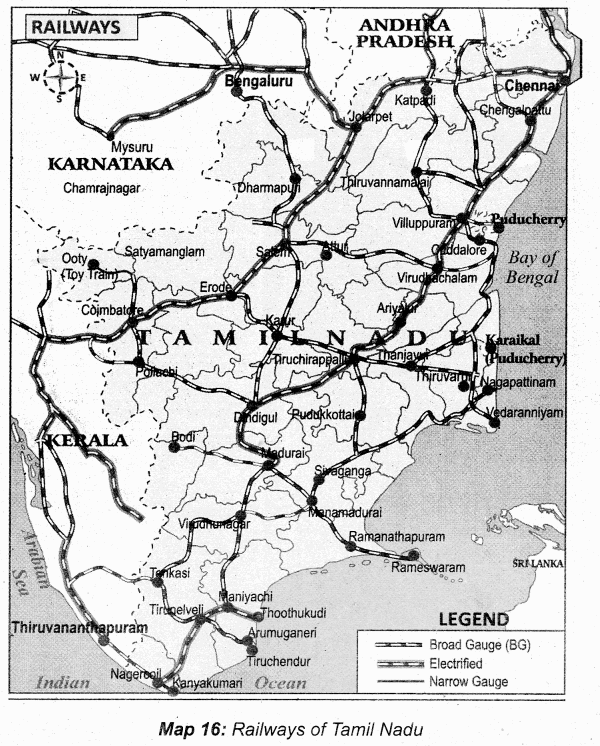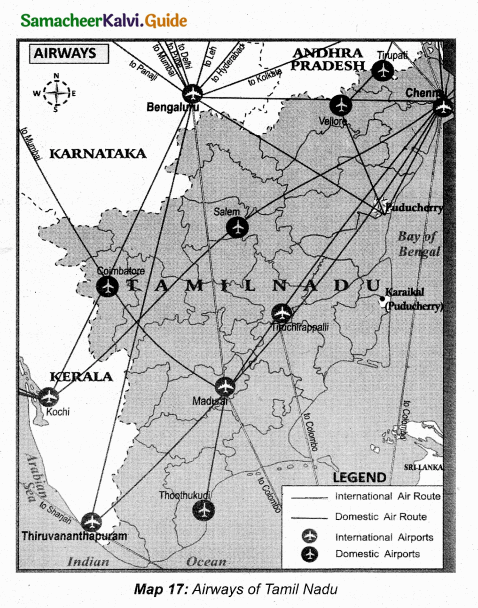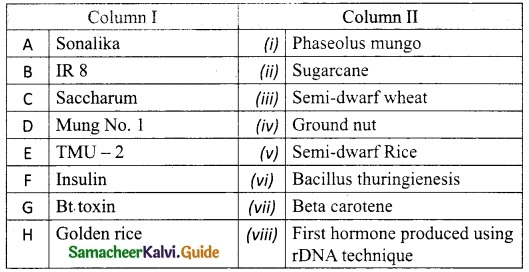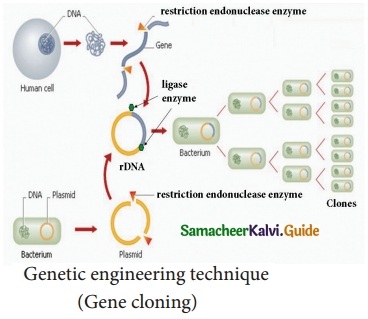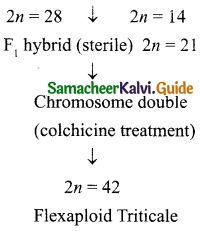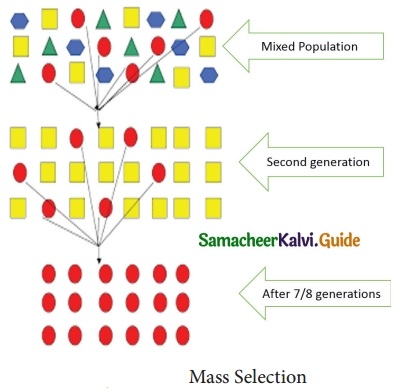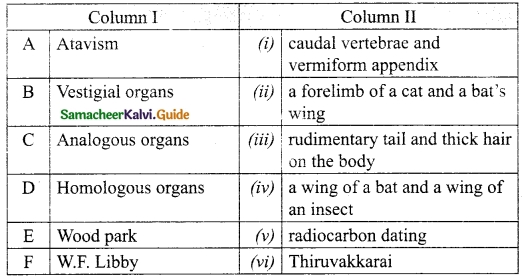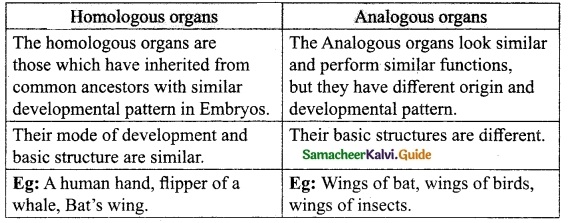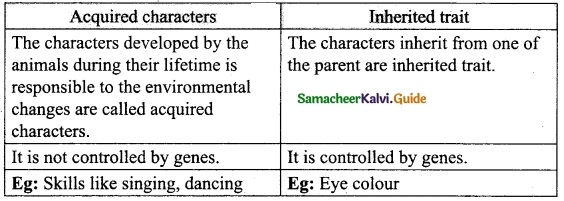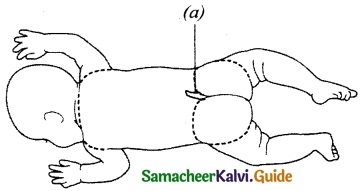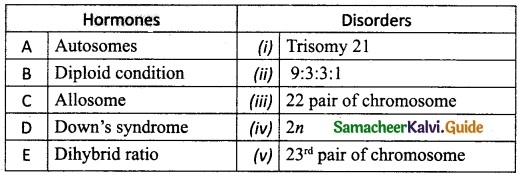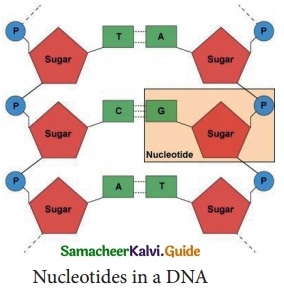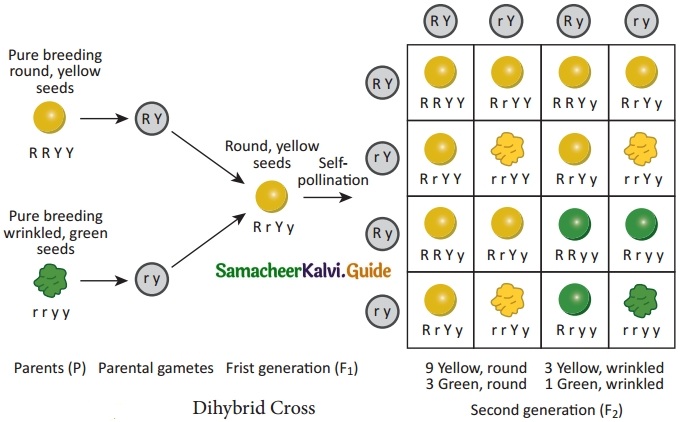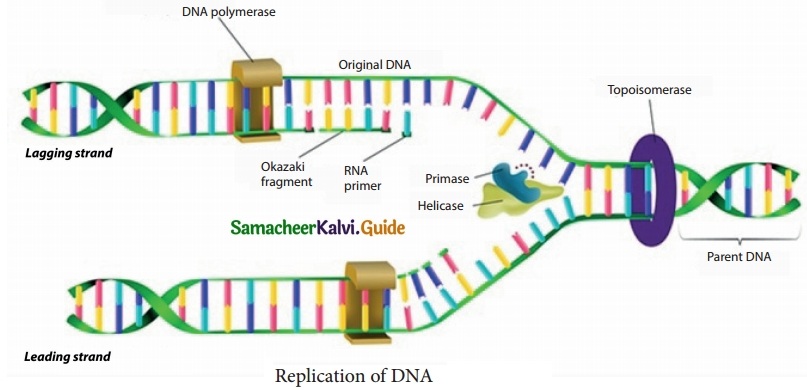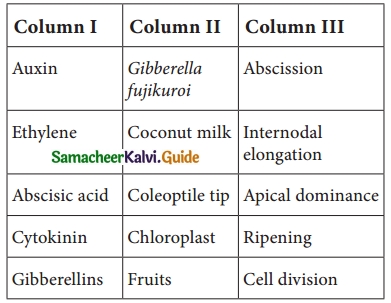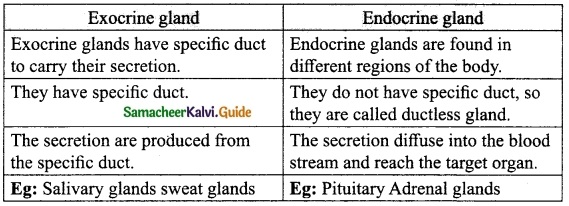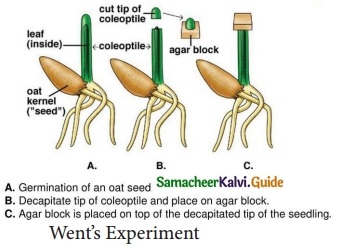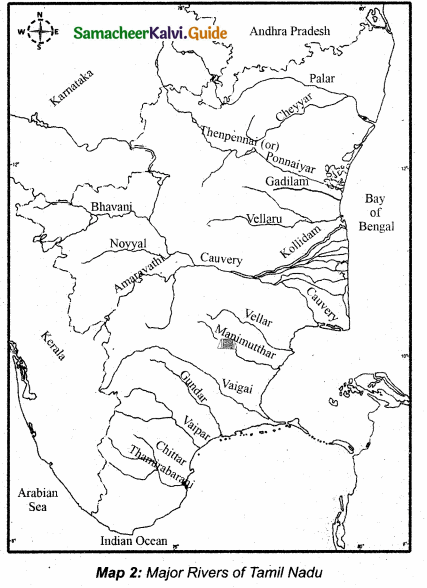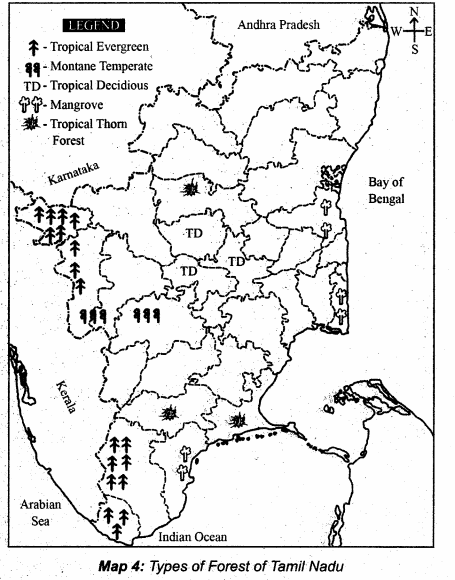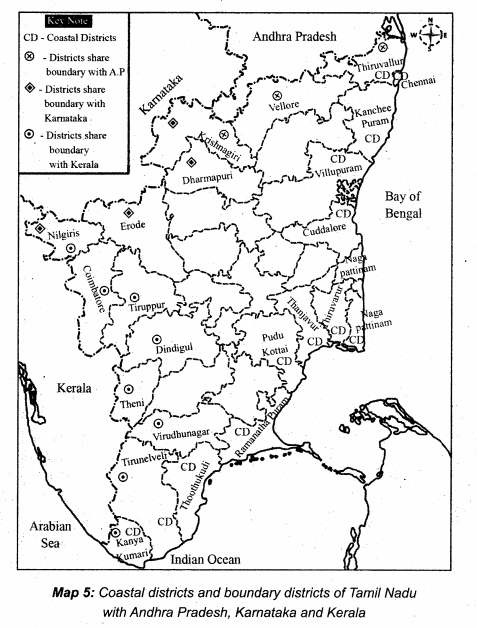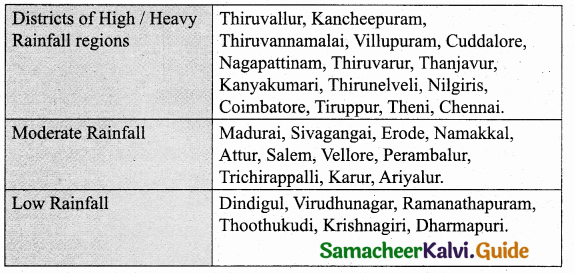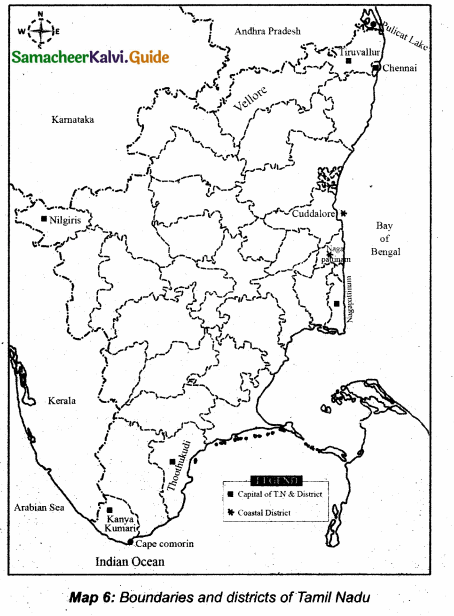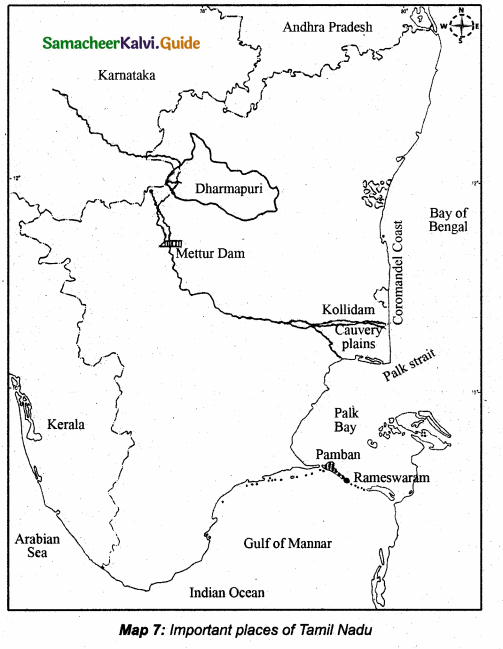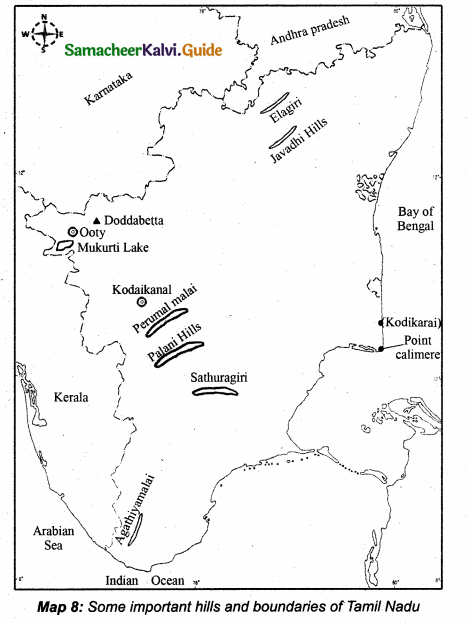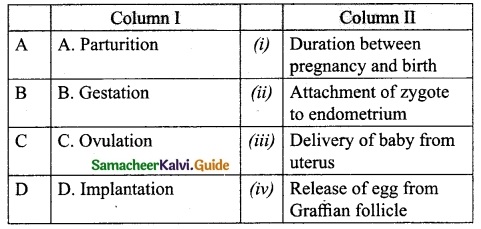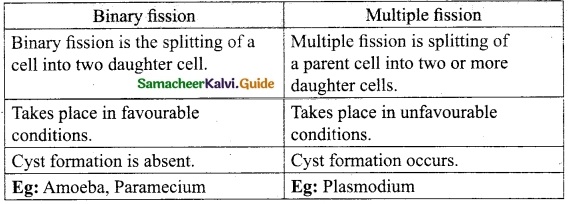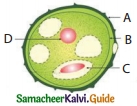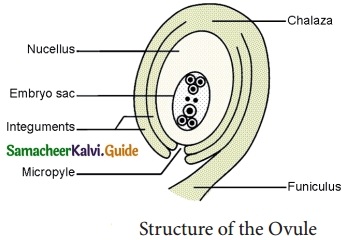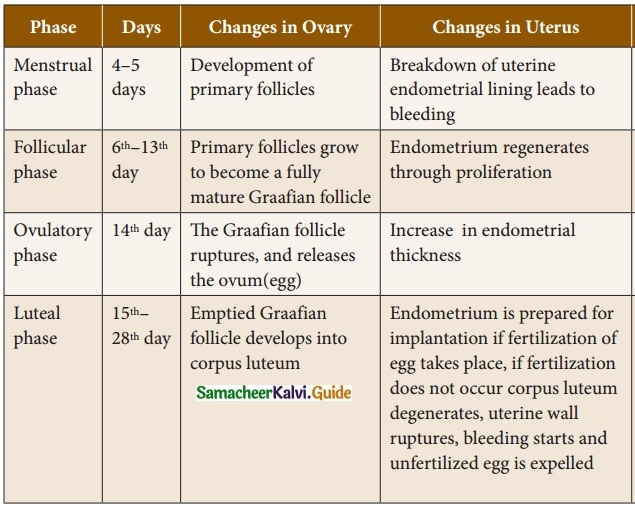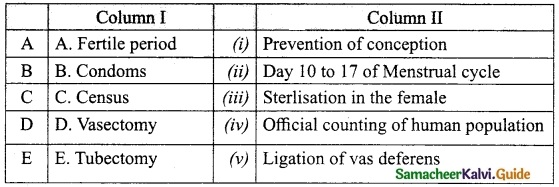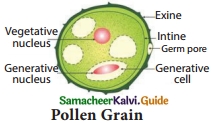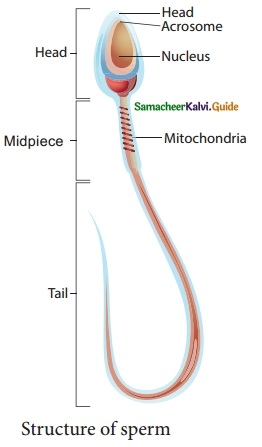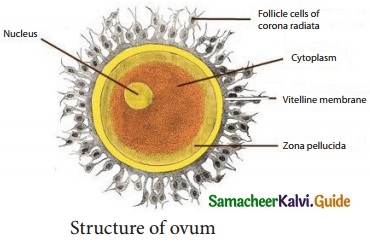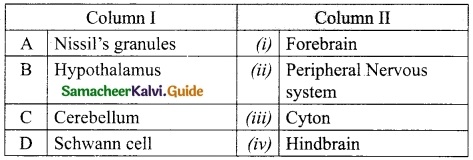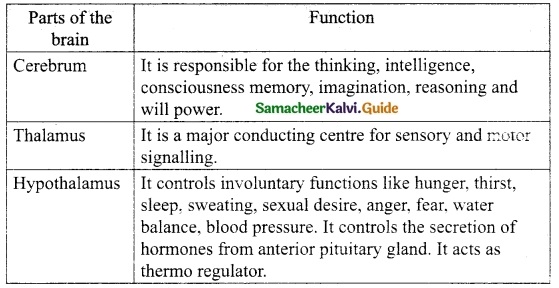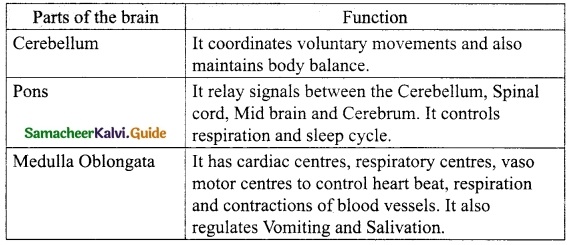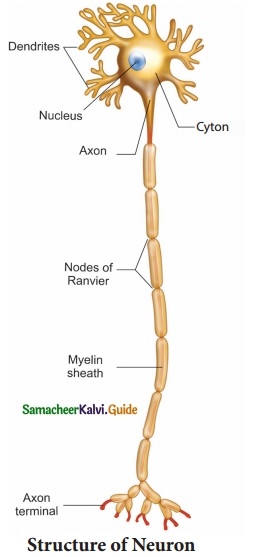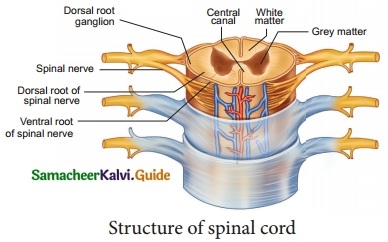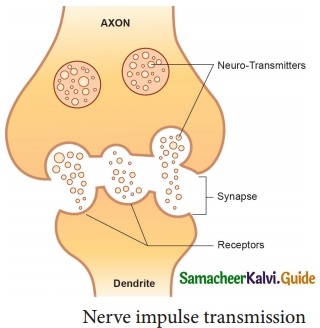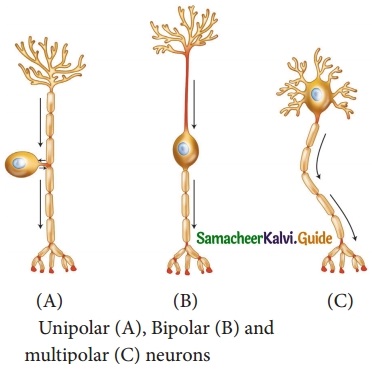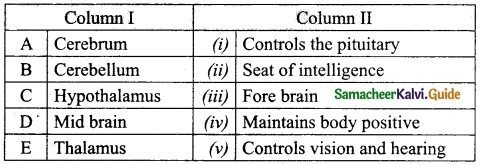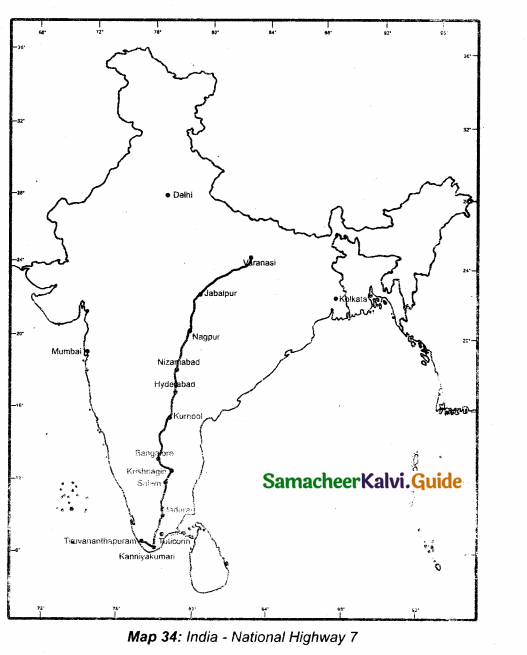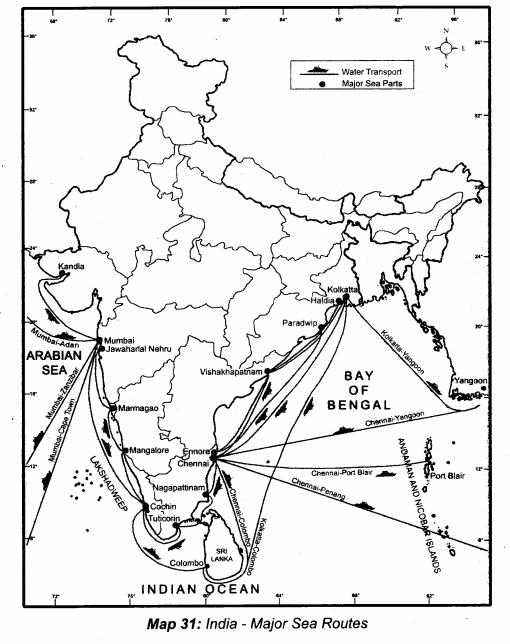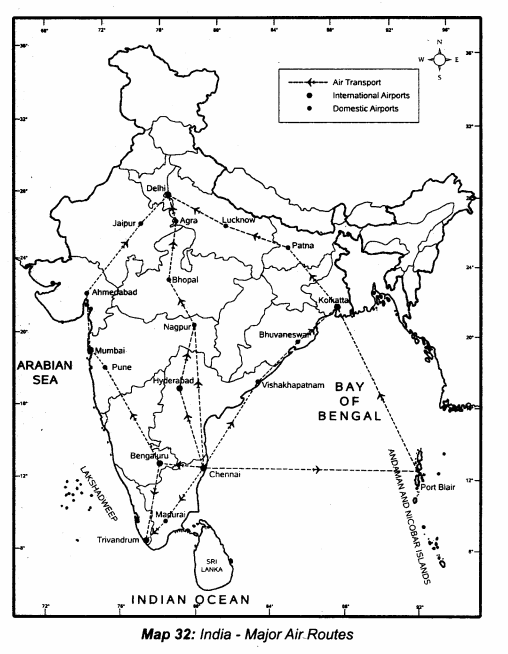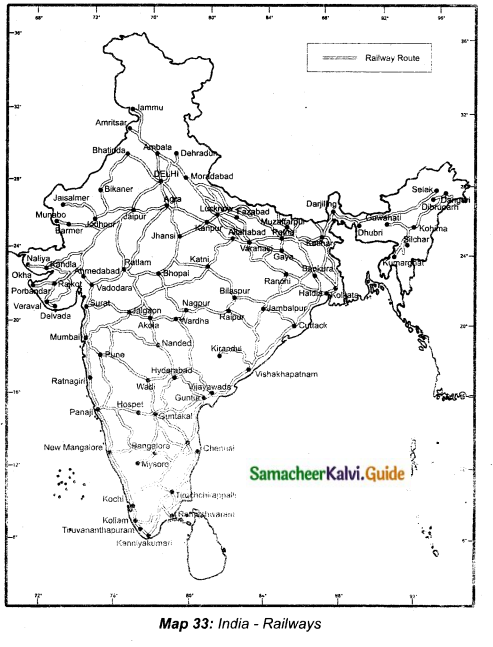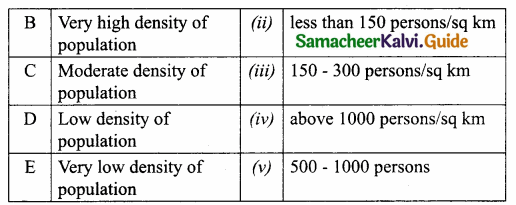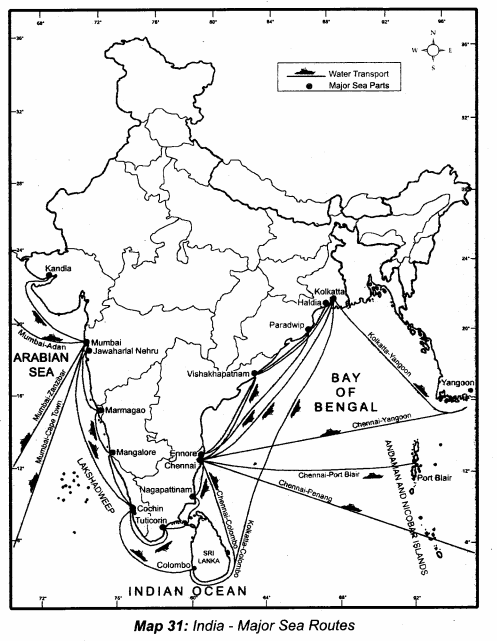Students can download 10th Science Chapter 21 Health and Diseases Questions and Answers, Notes, Samacheer Kalvi 10th Science Guide Pdf helps you to revise the complete Tamilnadu State Board New Syllabus, helps students complete homework assignments and to score high marks in board exams.
Tamilnadu Samacheer Kalvi 10th Science Solutions Chapter 21 Health and Diseases
Samacheer Kalvi 10th Science Health and Diseases Text Book Back Questions and Answers
I. Choose the correct answer:
Question 1.
Tobacco consumption is known to stimulate secretion of adrenaline. The component causing this could be:
(a) Nicotine
(b) Tannic acid
(c) Curcumin
(d) heptin
Answer:
(a) Nicotine
Question 2.
World ‘No Tobacco Day’ is observed on _______.
(a) May 31
(b) June 6
(c) April 22
(d) October 2.
Answer:
(a) May 31
Question 3.
Cancer cells are more easily damaged by radiations than normal cells because they are:
(a) Different in structure
(b) Non-dividing
(c) Starved mutation
(d) Undergoing rapid division
Answer:
(d) Undergoing rapid division
![]()
Question 4.
Which type of cancer affects lymph nodes and spleen?
(a) Carcinoma
(b) Sarcoma
(c) Leukaemia
(d) Lymphoma.
Answer:
(c) Leukaemia
Question 5.
Excessive consumption of alcohol leads to;
(a) Loss of memory
(b) Cirrhosis of liver
(c) State of hallucination
(d) Supression of brain
Answer:
(b) Cirrhosis of liver
Question 6.
Coronary heart disease is due to _______.
(a) Streptococci bacteria
(b) Inflammation of pericardium
(c) The weakening of heart valves
(d) Insufficient blood supply to heart muscles.
Answer:
(d) Insufficient blood supply to heart muscles.
Question 7.
Cancer of the epithelial cells is called:
(a) Leukemia
(b) Sarcoma
(c) Carcinoma
(d) Lipoma
Answer:
(c) Carcinoma
Question 8.
Metastasis is associated with _______.
(a) Malignant tumour
(b) Benign tumour
(c) Both (a) and (b)
(d) Crown gall tumour.
Answer:
(a) Malignant tumour
Question 9.
Polyphagia is a condition seen in:
(a) Obesity
(b) Diabetes mellitus
(c) Diabetes insipidus
(d) AIDS
Answer:
(b) Diabetes mellitus
Question 10.
Where does alcohol effect immediately after drinking?
(a) Eyes
(b) Auditory region
(c) Liver
(d) Central nervous system.
Answer:
(d) Central nervous system.
![]()
II. State whether True or False, if false write the correct statement:
1. AIDS is an epidemic disease.
2. Cancer causing genes are called Oncogenes.
3. Obesity is characterized by tumour formation.
4. In leukemia both WBCs and RBCs increase in number.
5. Study of cause of disease is called etiology.
6. AIDS is not transmitted by contact with a patient’s clothes.
7. Type 2 diabetes mellitus results due to insulin deficiency.
8. Carcinogens are cancer causing agents.
9. Nicotine is a narcotic drug.
10. Cirrhosis is associated with brain disorder.
Answer:
1. False – AIDS is an pandemic disease
2. True
3. False – Obesity is characterized by cancer formation.
4. False – In leukemia only WBC increases in number.
5. True
6. True
7. False – Type 1 diabetes mellitus results due to insulin deficiency.
8. True
9. False – Nicotine is a stimulant.
10. False – Cirrhosis is associated with liver disorder.
III. Expand the following abbreviations:
1. IDDM – Insulin Dependent Diabetes Mellitus
2. HIV – Human Immuno deficiency Virus
3. BMI – Body Mass Index
4. AIDS – Acquired Immuno Deficieny Syndrome
5. CHD – Coronary Heart Disease
6. NIDDM – Non-Insulin Dependent Diabetes Mellitus
![]()
IV. Match the following:
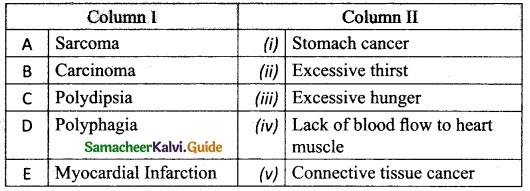
Answer:
A. (v)
B. (i)
C. (ii)
D. (iii)
E. (iv)
V. Fill in the blanks:
- Cirrhosis is caused in liver due to excessive use of ……….
- A highly poisonous chemicals derived from tobacco is ………..
- Blood cancer is called ………..
- Less response of a drug to a specific dose with repeated use is called ………..
- Insulin resistance is a condition in ……….. diabetes mellitus.
Answer:
- alcohol
- nicotine
- Leukaemia
- Drug tolerance
- Type 2
VI. Analogy type questions. Identify the first words and their relationship and suggest a suitable word for the fourth blank:
- Communicable: AIDS: Non communicable: ………..
- Chemotherapy: Chemicals: Radiation therapy: …………
- Hypertension: Hypercholesterolomia: Glycosuria: ………….
Answer:
- Cancer
- Radiation
- Hyper glycemia
VII. Answer in a Sentence:
Question 1.
What are psychotropic drugs?
Answer:
Drugs which acts on the brain and alter the behaviour, consciousness, power of thinking and perception are called psychotropic drug.
Question 2.
Mention the diseases caused by tobacco smoke.
Answer:
Lung cancer, bronchitis, pulmonary tuberculosis, emphysema and hypoxia are some of the diseases caused by tobacco smoke.
![]()
Question 3.
What are the contributing factors for Obesity?
Answer:
The social, behavioural, psychological, metabolic and cellular factors are the contributing factors of obesity.
Question 4.
What is adult – onset diabetes?
Answer:
In adult-onset diabetes, insulin production by the pancreas is normal and target cells do not respond to insulin.
Question 5.
What is metastasis?
Answer:
The cancerous cell migrate to distant Parts of the body affect new tissues. This process is called metastasis.
Question 6.
How does insulin deficiency occur?
Answer:
Insulin deficiency occurs by the destruction of P-cells of the pancreas and blood glucose levels are increased (hyperglycemia).
VIII. Short Answer Questions:
Question 1.
What are the various routes by which transmission of human immunodeficiency virus takes place?
Answer:
AIDS virus is present in urine, tears, saliva, breast milk and vaginal secretions. The virus is transmitted by the infected patient, who comes in contact with the blood of a healthy person. HIV/ AIDS is not transmitted by touch or any physical contact. It spreads through contact with body fluids or blood. HIV is generally transmitted by
- Sexual contact with an infected person.
- Use of contaminated needles or syringes.
- By the transfusion of contaminated or infected blood or blood products.
- From infected mother to her child through the placenta.
Question 2.
How is a cancer cell different from a normal cell?
Answer:
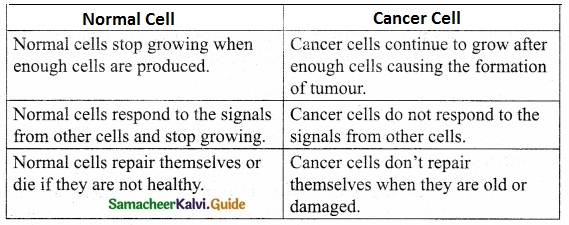
Question 3.
Differentiate between Type-1 and Type-2 diabetes mellitus.
Answer:
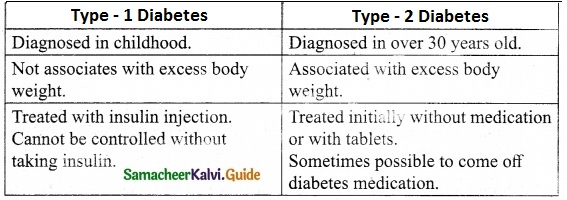
Question 4.
Why is a dietary restriction recommended for an obese individual?
Answer:
Low calorie, normal protein, vitamins and minerals, restricted carbohydrate Mid fat, high fibre diet can prevent overweight. Calorie restriction for weight reduction is safe and most effective. A low – calorie diet accompanied by moderate exercise will be effective in causing weight loss. Meditation, Yoga and Physical activity can also reduce stress-related to overeating.
![]()
Question 5.
What precautions can be taken for preventing heart diseases?
Answer:
Diet management: Reduction in the intake of calories, low saturated fat and cholesterol-rich food, low carbohydrates and common salt are some of the dietary modifications. Diet rich in polyunsaturated fatty acids (PUFA) is essential. Increase in the intake of fibre diet, fruits and vegetables, protein, minerals and vitamin are required.
Physical activity: Regular exercise, walking and yoga are essential for bodyweight maintenance.
Addictive substance avoidance: Alcohol consumption and smoking are to be avoided.
IX. Long Answer Questions:
Question 1.
Suggest measures to overcome the problems of an alcoholic.
Answer:
Measures to overcome the problems of an alcoholic:
- Education and Counselling: Education and proper counselling will help the alcoholics to overcome their problems and stress, to accept failures in their life.
- Physical activity: Individuals undergoing Rehabilitation measures should be guided into healthy activities like reading, music, sports, yoga and meditation.
- Seeking help from parents and peers: The affected individuals should seek help and guidance from parents and peers. This would help them to share their feeling of anxiety of wrongdoing and get rid of the habit.
- Medical assistance: Individuals should seek help from psychologists, and psychiatrists, to get relieved from this condition and to lead a relaxed and peaceful life.
Question 2.
Changes in lifestyle is a risk factor for occurrence of cardiovascular diseases. Can it be modified? If yes, suggest measures for prevention.
Answer:
The diseases that affect the heart and the blood vessels are called cardio vascular diseases. High blood cholesterol and high blood pressure are the major reason for heart diseases.
Yes, it can be modified by the following methods.
- By maintaining the desirable blood cholesterol (level less than 200 mg/dl).
- By following a good good diet with include increase in the intake of fibre diet, fruits and vegetables, protein, minerals and vitamins. Diet rich in polyunsaturated fatty acid.
- By doing physical activities like regular exercise, walking and yoga.
- By Avoiding alcohol and smoking.
X. Higher Order Thinking Skills: (HOTS)
Question 1.
What is the role of fat in the cause of atherosclerosis?
Answer:
The atherosclerosis is the condition, where the arteries become narrowed and hardened, due to the build-up of plaque (fatty streak to a fibrous form) around the artery wall and leads to the narrowing of blood vessels. It leads to Ischemia (deficient blood supply to the heart muscle) and myocardial infarction (death of the heart muscle tissue) occur. This disease disrupts the flow of blood around the body, posing the risk of serious complications.
![]()
Question 2.
Eating junk food and consuming soft drinks results in health problems like obesity, still children prefer. What are the suggestions you would give to avoid children eating junk food/ consumption of soft drinks?
Answer:
- Get them involved in Planning healthy meals shopping.
- Make them to understand the risk factors of eating junk food.
- Understand the importance of eating low caloric food and to avoid junk food as junk food and soft drinks have high calorie.
- To maintain the correct BMI.
Question 3.
Regular physical exercise is advisable for normal functioning of the human body. What are the advantages of practising exercise in daily life?
Answer:
The advantages of practising exercise in daily life are as follows:
- Practising exercise daily in our life make us feel happier.
- It helps us with weight loss.
- Exercises are good for the muscles and bones.
- It can increase our energy level.
- It can reduce the risk of chronic pain and chronic diseases.
- It can keep our skin, brain, health and memory.
- Exercises can help with relaxation and quality sleep.
Question 4.
A leading weekly magazine has recently published a survey analysis which says that number of AIDS patient in the country is increasing day by day. The report says that the awareness among the people about AIDS is still very poor. You are discussing the magazine report in your class and a team of your class decides to help people to fight against the dreadful disease.
(a) What problem you face when trying to educate the people in your village near by your school?
(b) How do you overcome the problem?
Answer:
(a) Many people are ignorant and not ready to discuss about the sexually transmitted disease like AIDS.
(b) Awareness to be created on the dreadful effects of AIDS and HIV.
XI. Value-Based Questions:
Question 1.
Once a person starts taking drugs or alcohol it is difficult to get rid of the habit. Why?
Answer:
It is difficult to get rid of the habit because they feel a strong urge to keep taking a drug or alcohol are dependent. It reaches the brain through the bloodstream. The persons fully dependent on drug or alcohol and they cannot live without drugs, which we call drug dependence.
Question 2.
Men addicted to tobacco lead to oxygen deficiency in their body. What could be the possible reason?
Answer:
Smoking increases carbon monoxide content in blood and reduces the concentration of haembound oxygen. This causes O2 deficiency in the blood.
Question 3.
Name any three foods that are to be avoided and included in the diet of a diabetic patient. Why should it be followed?
Answer:
The foods that are to be avoided in the diet of a diabetic patient, are all processed grains, french fries, packaged snacks high in salt and carbohydrates, white bread and white flour. Foods that are to be included in the diet of diabetic patients are Brown rice, whole wheat bread, whole-grain cereal, oatmeal, millet and vegetables.
![]()
Question 4.
How can informational efforts change people’s HIV knowledge and behaviour?
Answer:
Creating awareness campaign and educating people on the consequences of AIDS. Persons with HIV/AIDS should not be isolated from the family and society.
XII. Assertion and Reasoning:
In each of the following questions, a statement of Assertion is given and a corresponding statement of Reason is given just below it. Of statements given below mark the correct answer as:
(a) If both Assertion and Reason are true and Reason is the correct explanation of Assertion.
(b) If both Assertion and Reason are true and Reason is not the correct explanation of Assertion.
(c) Assertion is true but Reason is false.
(d) Both Assertion and Reason are false.
1. Assertion: All drugs act on the brain.
Reason: Drugs disturb the functioning of the body and mind.
Answer:
(a) If both Assertion and Reason are true and Reason is the correct explanation of Assertion.
2. Assertion: Excretion of excess glucose in urine is observed in a person with diabetes mellitus.
Reason: Pancreas is unable to produce sufficient quantity of insulin.
Answer:
(b) If both Assertion and Reason are true and Reason is not the correct explanation of Assertion.
Samacheer Kalvi 10th Science Health and Diseases Additional Important Questions and Answers
I. Choose the correct Answers:
Question 1.
Which is cancerous tumour?
(a) Benign tumour
(b) Malignant tumour
(c) Lymphoma
(d) All the above
Answer:
(b) Malignant tumour
Question 2.
The elevated blood glucose level is termed as ______.
(a) Glycosuria
(b) Hyperglycemia
(c) Polyphagia
(d) Hypoxia.
Answer:
(b) Hyperglycemia
![]()
Question 3.
Treatment of cancer is:
(a) Surgery
(b) Radiation
(c) Chemotherapy
(d) All the above
Answer:
(d) All the above
Question 4.
The fatty streak, plaque leads to the narrowing of blood vessels lead to ______.
(a) Ischemia
(b) Psychotherapy
(c) Emphysema
(d) Atherosclerosis.
Answer:
(d) Atherosclerosis.
Question 5.
The best diagnosis of cancer is done by:
(a) Biopsy
(b) X-ray
(c) Microscopic examination by body fluids
(d) Any of these
Answer:
(a) Biopsy
Question 6.
Tobacco chewing results in:
(a) Mouth cancer
(b) Lung cancer
(c) Bone cancer
(d) Leukaemia
Answer:
(a) Mouth cancer
Question 7.
Addicion of tobacco is due to:
(a) Histamine
(b) Nicotine
(c) Cocaine
(d) Caffeine
Answer:
(b) Nicotine
Question 8.
A factor responsible for cirhosis of liver is:
(a) vitamins
(b) fats and oils
(c) alcoholism
(d) sugar
Answer:
(c) alcoholism
Question 9.
Which is related to tobacco addiction?
(a) Gastric and duadenal ulcers
(b) Bronchitis
(c) Emphysema
(d) All the above
Answer:
(d) All the above
Question 10.
Aizheimers disease affects:
(a) childhood
(b) adolescent
(c) young people
(d) elderly people
Answer:
(d) elderly people
![]()
Question 11.
HIV that causes AIDS, first starts destroying:
(a) (3-Lymphocytes
(b) Leucocytes
(c) Helper-t-Lymphocytes
(d) Thrombocyte
Answer:
(c) Helper-t-Lymphocytes
Question 12.
ELISA test is used for detection of:
(a) Antibodies
(b) Viral diseases
(c) AIDS
(d) All the above
Answer:
(c) AIDS
II. State whether True or False, if false write the correct statement:
- Insulin administration is necessary for Type-2 diabetes.
- Hypoxin is decrease of oxygen in body tissue.
- International Day against drug abuse and Illicit trafficking is on June 5th.
Answer:
- False – Insulin administration is necessary for Type-1 diabetes.
- True
- False – International Day against drug abuse and Illicit trafficking is on June 26,h
III. Expand the following abbreviations:
1. POCSO – Protection Of Children from Sexual Offences
2. WHO – World Health Organisation
3. CVD – Cardio Vascular Disease
4. ELISA – Enzyme Linked Immuno Sorbert Assay
5. NC PCR – National Commission for Protection of Child Rights
6. LDL – Low Density Lipo protein
IV. Match the following:

Answer:
A. (iii)
B. (i)
C. (iv)
D. (iii)
E. (ii)
V. Fill in the blanks:
1. Child helpline number is …………
2. Psychotropic drugs are also called as ………..
3. ……….. is powdered tobacco taken through nose.
4. Body Mass Index = …………
5. ………. seed contains Insoluble fibre.
6. Desirable level for blood cholesterol is ………..
7. The study of cancer is called ………….
8. World Aids Day is observed on ………….
9. The condition of suppressing the body’s defence mechanism is …………
Answer:
1. 1098
2. mood altering drug
3. Sniffing
4. 
5. Flax seed
6. Less than 200 mg/dl
7. Concology
8. December 1st
9. AIDS
![]()
VI. Analogy type questions. Identify the first words and their relationship and suggest a suitable word for the fourth blank:
- Sarcome: Skin cancer :: Leukaemia ………
- Diabetes: Increase in blood glucose :: Obesity : ……….
Answer:
- Blood Pressure
- Increase in body weight
VII. Answer in a word or sentence:
Question 1.
Name some of the risk factors for illness and early death.
Answer:
Smoking cigarettes, Alcohol addiction, use of drugs, eating high fat and cholesterol-rich diets, excessive intake of Junk foods and reduced physical activity are some of the risk factors for illness and early death.
Question 2.
What is neoplasm?
Answer:
The uncontrolled proliferation of cells results in clones are called neoplasm or tumour.
Question 3.
Why sharing of injection needles between two individuals is not recommended?
Answer:
Because it may transmit certain pathogens like HIV, Hepatitis B.
Question 4.
What does child helpline provides?
Answer:
The child helpline provides a social worker who can assist the child by providing food, shelter and protection.
Question 5.
Define physical abuse.
Answer:
Physical abuse of a child is defined as those acts that cause physical harm such as threatening, beating, kicking and hitting the child.
Question 6.
Who is a drug addict?
Answer:
A person who is habituated to a drug due to its prolonged use is called drug addict.
![]()
Question 7.
What are addictive drug?
Answer:
A drug that modifies the physical, biological, psychological or social behaviour of a person by stimulating, depressing or disturbing the functions of the body and the mind is called addictive drug,
Question 8.
How does sexually abused children behave?
Answer:
Sexually abused children show symptoms of genital injury, abdominal pain, frequent urinary infection and behavioural problems.
Question 9.
What are the symptoms of heart diseases?
Answer:
Shortness of breath, headache, tiredness, dizziness, chest pain, swelling of leg and gastrointestinal disturbances.
Question 10.
What is Glycosuria?
Answer:
Excessive glucose excreted in urine is called Glycosuria.
VIII. Short Answer Questions:
Question 1.
What are the objectives of POCSO?
Answer:
Objectives of the POCSO Act, 2012.
(i) To protect children from the offences of
- Sexual assault
- Sexual harassment
- Pornography
(ii) To establish Special Courts for speedy trial of such offences.
Question 2.
How is psychotheraphy given to drug de addictive?
Answer:
Psychotherapy : Individual and group counselling is given by psychologists and counsellors. The treatment includes efforts to reduce the addict’s stress, taught new ways to solve everyday’s problems, adequate diet, rest and relaxation.
Question 3.
What is physical abuse? What does child abuse constitute?
Answer:
Physical abuse of a child is defined as those acts that cause physical harm such as the threatening, beating, kicking and hitting the child. Child abuse constitutes all forms of physical or emotional ill – treatment, sexual abuse, exploitation resulting in child’s ill health, survival and development.
![]()
Question 4.
How can we prevent smoking?
Answer:
Knowing the dangers of smoking and chewing tobacco adolescents and the old people need to avoid these habits. Proper counselling and medical assistance can help an addict to give up the habit of smoking.
Question 5.
What are the harmful effects of Alcohol?
Answer:
- Prolonged use of alcohol depresses the nervous system, by acting as a sedative and analgesic substance.
- Nerve cell damage, causing mental or physical disturbances.
- Lack of Co-ordination of body organs.
- Blurred or reduced vision, results in road accidents.
- Dilation of blood vessels, which affect the functioning of the heart.
- Liver damage, resulting in fatty liver which leads to cirrhosis and formation of fibrous tissues.
- Body loses its control and consciousness leading to health complications.
Question 6.
How can we control and prevent diabetes?
Answer:
Diet, hypoglycemic drugs, insulin injection and exercise are the management options based on the type and severity of the condition. The overall goal of diabetes management is to maintain normal blood glucose level.
Question 7.
Explain the Carcinogenic agents.
Answer:
Cancer-causing agents are called Carcinogenic agents or Carcinogens. They are:
- Physical Irritant: Heavy smoking causes lung cancer and cancers of the oral cavity, pharynx and larynx. Betel and tobacco chewing causes oral cancer. Excessive exposure to sunlight may cause skin cancer.
- Chemical agents: Nicotine, caffeine, products of combustion of coal and oil, pesticides, asbestos, nickel, certain dyes and artificial sweeteners induce cancer.
- Radiations: Ionizing radiations like X – rays, gamma – rays, radioactive substances and non – ionising radiations like UV rays cause DNA damage leading to cancer.
- Biological agents: Cancer-causing virus are called oncogenic viruses.
IX. Long Answer Questions:
Question 1.
List out the behavioural changes of drug user.
Answer:
Adverse effects of drug use among adolescents are:
- Drop in academic performance, absence from school or college.
- Lack of interest in personal hygiene,isolation, depression, fatigue and aggressive behaviour.
- Deteriorating relationship with family and friends.
- Change in food and sleeping habits.
- Fluctuation in body weight and appetite.
- Always looking out for an easy way to get money for obtaining drugs.
- Prone to infections like AIDS and Hepatitis-B.
Question 2.
Explain the following:
(a) Drug Dependence
(b) Behavioural Changes of Drug Users
(c) Drug De – addiction
Answer:
(a) Drug Dependence: Persons who consume psychotropic drugs become fully dependent on them, they cannot live without drugs. This condition is referred to as Drug Dependence. The dependence maybe
- Physical and mental dependence: Dependence on the drug for normal condition of well being and to maintain physiological state.
- Psychological dependence is a feel that drugs help them to reduce stress.
(b) Behavioural Changes of Drug Users:
- Drop-in Academic performance, absence from school or college.
- Lack of interest in personal hygiene, isolation, depression, fatigue and aggressive behaviour.
- Deteriorating relationship with family and friends.
- Change in food and sleeping habits.
- Fluctuation in body weight and appetite.
- Always looking for an easy way to get money for obtaining drugs.
- Prone to infections like AIDS and Hepatitis – B.
(c) Drug De-addiction:
- Detoxification: The drug is stopped gradually and the addict is helped to overcome the withdrawal symptoms. The addict undergoes severe physical and emotional disturbance. This is taken care of by specific medication.
- Psychotherapy: Individual and group counselling is given by psychologists and counsellors.
The treatment includes efforts to reduce the addict’s stress, taught new ways to solve everyday’s problems, adequate diet, rest and relaxation. - Counselling to family members: Social workers counsel family members in order to change the attitude of rejection. So that the addict is accepted by the family and society.
- Rehabilitation: They are given proper vocational training so that they can lead a healthy life and become useful members of society.
![]()
Question 3.
What are Carcinogen? Write a note on carcinogenic agents.
Answer:
Cancer causing agents are called carcinogens. They are physical, chemical agents, ionizing radiations and biological agents.
Physical Irritant : Heavy smoking causes lung cancer and cancers of oral cavity, pharynx (throat) and larynx. Betel and tobacco chewing causes oral cancer. Excessive exposure to sunlight may cause skin cancer.
Chemical agents : Nicotine, caffeine, products of combustion of coal and oil, pesticides, asbestos, nickel, certain dyes and artificial sweetners induce cancer.
Radiations : Ionizing radiations like X-rays, gamma-rays, radioactive substances and non-ionising radiations like UV rays cause DNA damage leading to cancer.
Biological agents : Cancer causing viruses are called oncogenic viruses.
X. Higher Order Thinking Skills: (HOTS)
Question 1.
Ram participated in a group discussion on the topic ill effects of tobacco on human health
(a) List any two ill effects of tobacco.
(b) Suggest any two measures on anti-tobacco awareness.
Answer:
(a) Pulmonary tuberculosis and emphysema are caused by tobacco.
(b) Proper Counselling and medical assistance help to give up the habit.
Question 2.
Which diagnosis is essential for confirming diabetes?
Answer:
If the fasting blood glucose is greater than 140 mg/dl or the random blood glucose is greater than 200 mg/ml, on more than two occasions, confirms diabetes.
XI. Value-Based Questions:
Question 1.
Adolescence is a vulnerable phase of mental and physiological development in an individual. They are more to addiction at this age.
(a) Give two reasons for addiction in adolescence.
(b) Mention two preventive measures.
Answer:
(a) Peer Pressure and mood swing
(b) Creating awareness and proper counselling
![]()
Question 2.
A person is your locality has been diagnosed with AIDS people in your locality want him to leave the colony for the fear of spread of AIDS.
(a) List the way AIDS virus be transmitted.
(b) Give two suggestion to prevent it.
Answer:
(a) AIDS transmitted by sexual contact with infected person or by infected blood transfusion.
(b) Advocating safe sex screening of blood from blood banks for HIV before transfusion.
XII. Assertion and Reasoning;
In each of the following questions, a statement of Assertion is given and a corresponding statement of Reason is given fust below if. Of statements given below mark the correct answer as:
Question 1.
Assertion (A): Alcohol consumption during pregnancy is not desirable.
Reason (R): Alcohol causes physical and mental defects in the offspring.
(a) If both Assertion and Reason are true and Reason is the correct explanation of Assertion.
(b) If both Assertion and Reason are true that Reason is not the correct explanation of Assertion.
(c) Assertion is true but Reason is false.
(d) Both Assertion and Reason are false.
Answer:
(a) If both Assertion and Reason are true and Reason is the correct explanation of Assertion.
Question 2.
Assertion (A): All types of cancer results in tumours.
Reason (R): Cancer is easily treatable with anti biotic.
(a) If both Assertion and Reason are true and Reason is the correct explanation of Assertion.
(b) If both Assertion and Reason are true that Reason is not the correct explanation of Assertion.
(c) Assertion is true but Reason is false.
(d) Both Assertion and Reason are false.
Answer:
(d) Both Assertion and Reason are false.
![]()
Question 3.
Assertion (A): Cancer is a contagious disease.
Reason (R): It is transmitted from a patient to a healthy person by casual contact.
(a) If both Assertion and Reason are true and Reason is the correct explanation of Assertion.
(b) If both Assertion and Reason are true that Reason is not the correct explanation of Assertion.
(c) Assertion is true but Reason is false.
(d) Both Assertion and Reason are false.
Answer:
(d) Both Assertion and Reason are false.

